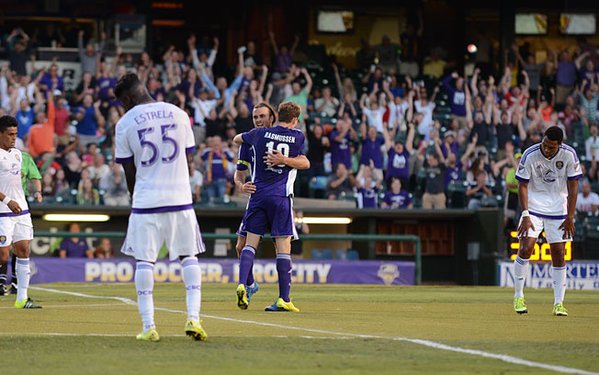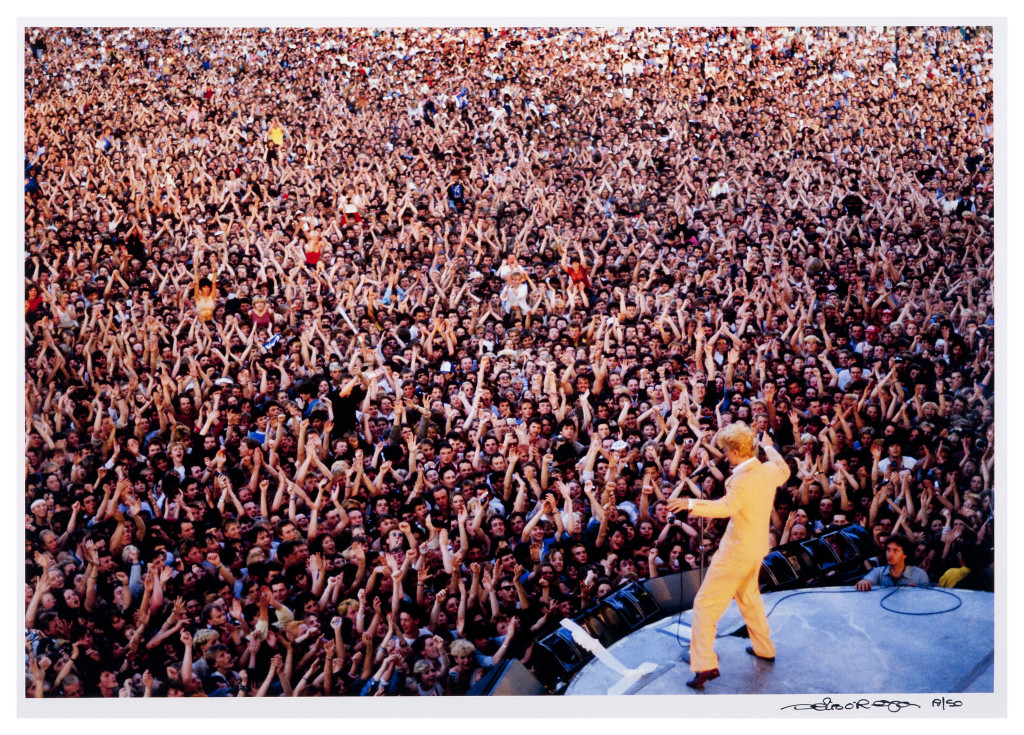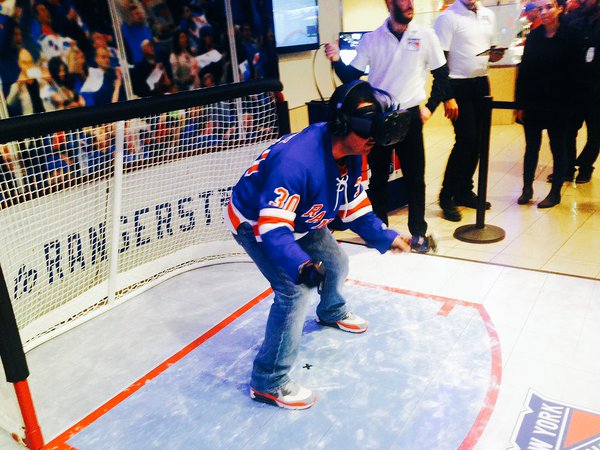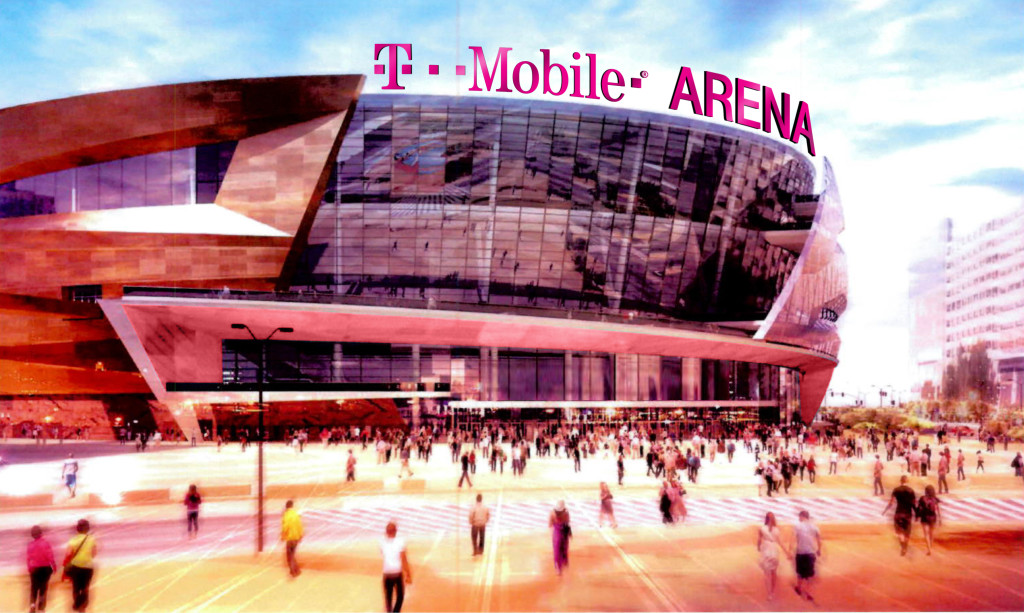Louisville Announces Study for New Soccer-specific Stadium

The City of Louisville took a major step in supporting Louisville City FC’s goal of building a soccer-specific stadium by announcing a $75,000 feasibility study conducted by CSL International that will examine four potential stadium sites in the Louisville, Kentucky, area.
“Professional soccer is off to a great start in Louisville, and a new soccer stadium could have many positive impacts on our economy,” Mayor Greg Fischer said. “This new investment in soccer will contribute to our authentic and vibrant community and give citizens one central team to rally around.”
Louisville City FC currently plays at Louisville Slugger Field, a minor-league baseball stadium where they averaged more than 6,000 fans per game for the inaugural 2015 season. Louisville City FC took over Orlando City’s USL Franchise after Orlando was awarded an MLS Expansion team in 2015 upon showing similar success at the lower level. As a member of the United Soccer League (USL), Louisville City FC must be in a soccer-specific stadium by 2020 per league policy, but Louisville City FC officials may be looking to follow Orlando’s lead and pursue MLS expansion rights to give Louisville its first team in one of the five major leagues (NFL, NBA, NHL, MLB, MLS).
The study’s results will provide the city an understanding of the potential to support a new 8,000- to 10,000-seat stadium that would have the ability to attract an MLS franchise to an expanded 20,000-seat stadium in the future.
(Image: Twitter)
News You May Have Missed

These are selected news articles that showed up in our inboxes on Monday morning that we want to pass along to you.
David Bowie Tribute Concert to Take Place at Carnegie Hall (Billboard)
“Carnegie Hall will be presenting a memorial concert in tribute to David Bowie and his legacy (the concert was already in the works before he died, but will now be a memorial). Among the confirmed artists to perform thus far are the Roots, Cyndi Lauper, and the Mountain Goats.”
Sydney’s Sport Stadiums to Get a $1 billion-plus Upgrade Thanks to Sell-off of Land and Property Information Service (The Courier Mail)
“Premier Mike Baird has already earmarked $600 million from the Restart NSW fund for the ambitious stadiums plan, which includes the new 50,000-seat stadium at Moore Park, rebuilding Parramatta Stadium and upgrading ANZ Stadium at Homebush.”
First-of-its-kind Cowboys Club in Frisco Starts Selling Memberships to Public (The Dallas Morning News)
“The club also offers multiple dining options, a spa and salon, private and corporate meeting space, a private rooftop swimming pool and billiards tables.”
How College Football Playoff Optimizes Fan Experience on Championship Game Day and Throughout the Year (SportTechie)
“To offer fans the feeling of involvement they are seeking, the CFP Gameday app offers features that deliver immersive college football information, real-time game updates, team rankings, CFP structure and purpose information, and in-app social media interactivity. ”
For Broadway, 2015 Was a Mixed Bag (The Wall Street Journal)
“Despite strong finish in New Year’s week, the year’s numbers don’t measure up to 2014.”
(Image: David Bowie, Milton Keynes Bowl, 1983, taken by Denis O’Regan)
STRIVR Launches Fan Experience Division

It’s already eight days into the new year and I’ve yet to talk about virtual reality (VR). Looks like, though, there’s something new you may be interested in. Yesterday, January 7, STRIVR Labs Inc. announced it launched a Fan Experience and VR Production division to focus on bringing fans and venues unique experiences through technology.
STRIVR recently created an immersive and interactive experience when it partnered with Madison Square Garden and the New York Rangers. Fans had the chance to become a Rangers goalie and block game-like shots in a virtual Madison Square Garden.
“STRIVR has been an incredible partner to MSG,” said Andrew Lustgarten, executive vice president of corporate development and strategy of The Madison Square Garden Co., in a statement. “You truly feel like you are on the ice at The Garden, and it brings our fans to places they’ve never been before.”
The company’s new division will be lead by Logan Mulvey, a former Hollywood film executive, and Brian Murphy, former head of finance and business development at GoDigital and Amplify under Mulvey.
STRIVR was found in February 2015 and is quickly making a name for itself as a sports training platform. There are 23 organizations and universities—such as the Minnesota Vikings, the Washington Capitals, Stanford University, and Clemson University—that make use of its technology to train athletes.
(Image: Twitter)
Javits Convention Center Plans $1 Billion Expansion

New York Governor Andrew Cuomo announced today, January 7, a $1-billion plan to expand the Jacob K. Javits Convention Center in New York City.
“The Javits Center has long been an economic generator for this state, but we want to build and expand it to ensure it remains a premier venue for the next generation,” Governor Cuomo said in a statement. “Through one of the most aggressive development plans in the history of the State of New York, we are transforming one of our largest convention centers into an unparalleled, world-class venue. The new Javits Center will continue to garner millions in economic activity, create jobs and keep New York’s economic momentum moving forward.”
The plan calls for increasing the center’s size by more than 50 percent (from 2.1 million square feet to 3.3 million square feet), increasing truck parking (a 480,000-square-foot truck garage), increasing solar power (a 34,000-square-foot solar array), and creating a 2,500-person capacity green roof terrace with Hudson River views.
“For nearly 30 years, the Javits Center has supported thousands of jobs for New Yorkers, and the center’s expansion will create thousands more for tomorrow,” said Alan Steel, president and CEO of the New York Convention Center Operating Corp, in a statement. “Every event held at Javits strengthens New York’s economy, and with more exhibition and meeting space, this one-of-a-kind facility will realize its true potential as an economic generator. With a new truck marshaling facility on site, events can move in and out faster than ever before, saving our clients time and money and reducing the number of trucks on the streets.”
Cuomo’s proposal for Javits is projected to create 4,000 full-time jobs and 2,000 part-time jobs. The proposal’s cost will be paid for by the center within existing resources, and construction is set to begin in 2016.
“Manhattan’s West Side has become New York’s next great neighborhood, and this project capitalizes on the worldwide draw of this area,” said Henry Silverman, chairman of the board of directors for the New York Convention Center Operating Corp. and the New York Convention Center Development Corp., in a statement. “With 500,000 square feet of contiguous exhibition space on one level, the Javits Center will rival any similar venue across the nation, providing a host of unique meeting spaces that will entice businesses from around the world to unveil their latest innovations here.”
(Image: Office of the Governor Andrew Cuomo)
Las Vegas Arena Named T-Mobile Arena

The upcoming 20,000-seat arena from AEG and MGM Resorts International in Las Vegas now has a name: T-Mobile Arena.
“We’re going to light up Las Vegas in magenta and give everyone who visits T-Mobile Arena a chance to experience what it means to be Un-carrier!” said Mike Sievert, chief operating officer of T-Mobile, in a statement. “T-Mobile Arena will have the biggest shows in a town known for big shows and T-Mobile customers will always be treated like VIPs with priority access and exclusive benefits.”
T-Mobile customer benefits at the arena include a dedicated fast-track VIP venue entrance at every event, exclusive tickets and premium VIP experiences at select events, and pre-sales and seat upgrade opportunities. Charging stations will be located throughout the arena, too, for everyone.
“T-Mobile is disruptive and irreverent − a perfect complement to our vision of entertainment in Las Vegas,” said Todd Goldstein, chief revenue officer for AEG, in a statement. “Their commitment to the best and the most cutting-edge technology and customer experience makes them ideal for Las Vegas’ newest showplace for the top sports and entertainment events. There will be no finer destination to bring T-Mobile’s Un-carrier revolution and tech innovation to life than T-Mobile Arena where guests, performers and other partners will truly benefit from the overall experience.”
T-Mobile Arena already has events confirmed, such as musical act The Killers performing on opening night, April 6. Other events include UFC 200 in July, Harlem Globetrotters, George Strait, Garth Brooks, Dixie Chicks, Janet Jackson, UNLV/Duke college basketball, and the 2016 PBR World Finals.
“Today’s announcement highlights T-Mobile’s commitment to both its customers and the community here in Las Vegas − the Entertainment Capital of the World,” MGM Resorts International’s President Bill Hornbuckle said in a statement. “T-Mobile has set itself apart through its industry-changing Un-carrier moves that put the customer first. Together with our arena founding partners, we will deliver even more entertaining and engaging fan experiences in what is destined to be one of the world’s leading arenas.”
(Image: AEG)
Do you want to receive a Front Row News weekly digest?
Categories
- Allied (861)
- Architecture (147)
- Arenas (747)
- Career (897)
- Convention Centers (895)
- Education (623)
- Events (1,544)
- Food & Beverage (193)
- Foundation (113)
- Guest Experience (1,496)
- Industry News (2,270)
- Leadership (1,888)
- Marketing (150)
- Membership (2,000)
- Music (213)
- Performing Arts Centers (454)
- Professional Development (409)
- Research (127)
- Safety & Security (442)
- Sports (763)
- Stadiums (608)
- Student (159)
- Technology (516)
- Ticketing (92)
- Touring (82)
- Trends (364)
- Uncategorized (743)
- Universities (218)
- Video (25)
- Young Professional (198)
Twitter Feed
- Twitter feed loading
Recent Posts
- Venuworks and ATG Entertainment Selected to Manage Fresno Convention and Entertainment Center
- Seattle Convention Center Announces Strategic Leadership Appointment and Growth Initiatives for 2026
- Peggy Daidakis Humbly Made Convention Center History
- Welcome to Our Newest Members
- New Member Benefit! IAVM Partners with Advantage Training to Elevate Staff Readiness and Guest Experience
Categories
- Allied
- Architecture
- Arenas
- Career
- Convention Centers
- Education
- Events
- Food & Beverage
- Foundation
- Guest Experience
- Industry News
- Leadership
- Marketing
- Membership
- Music
- Performing Arts Centers
- Professional Development
- Research
- Safety & Security
- Sports
- Stadiums
- Student
- Technology
- Ticketing
- Touring
- Trends
- Uncategorized
- Universities
- Video
- Young Professional
Archives
- December 2025
- November 2025
- October 2025
- September 2025
- August 2025
- July 2025
- June 2025
- May 2025
- April 2025
- March 2025
- February 2025
- January 2025
- December 2024
- November 2024
- October 2024
- September 2024
- August 2024
- July 2024
- June 2024
- May 2024
- April 2024
- March 2024
- February 2024
- January 2024
- December 2023
- November 2023
- October 2023
- September 2023
- August 2023
- July 2023
- June 2023
- May 2023
- April 2023
- March 2023
- February 2023
- January 2023
- December 2022
- November 2022
- October 2022
- September 2022
- August 2022
- July 2022
- June 2022
- May 2022
- April 2022
- March 2022
- February 2022
- January 2022
- December 2021
- November 2021
- October 2021
- September 2021
- August 2021
- July 2021
- June 2021
- May 2021
- April 2021
- March 2021
- February 2021
- January 2021
- December 2020
- November 2020
- October 2020
- September 2020
- August 2020
- July 2020
- June 2020
- May 2020
- April 2020
- March 2020
- February 2020
- January 2020
- December 2019
- November 2019
- October 2019
- September 2019
- August 2019
- July 2019
- June 2019
- May 2019
- April 2019
- March 2019
- February 2019
- January 2019
- December 2018
- November 2018
- October 2018
- September 2018
- August 2018
- July 2018
- June 2018
- May 2018
- April 2018
- March 2018
- February 2018
- January 2018
- December 2017
- November 2017
- October 2017
- September 2017
- August 2017
- July 2017
- June 2017
- May 2017
- April 2017
- March 2017
- February 2017
- January 2017
- December 2016
- November 2016
- October 2016
- September 2016
- August 2016
- July 2016
- June 2016
- May 2016
- April 2016
- March 2016
- February 2016
- January 2016
- December 2015
- November 2015
- October 2015
- September 2015
- August 2015
- July 2015
- June 2015
- May 2015
- April 2015
- March 2015
- February 2015
- January 2015
- December 2014
- November 2014
- October 2014
- September 2014
- August 2014
- July 2014
- June 2014
- May 2014
- April 2014
- March 2014
- February 2014
- January 2014
- December 2013
- November 2013
- October 2013
- September 2013
- August 2013
- July 2013
- June 2013
- May 2013
- April 2013
- March 2013
- February 2013
- January 2013
- May 2012
- March 2012
- December 2011
- November 2011
- October 2011
Recent Comments
- Frank Bradshaw, Ph.D., CVE on John Meyer, CVE, a Tireless Advocate of Certification for Venue Professionals, Has Died
- Neil Sulkes on Hilary Hartung, Friend to Many in Venue Marketing, Has Left Us
- Jason Parker, CVE on The Devastation of Hurricane Helene and How We Can Support One Another
- Larry Perkins on Touhey Testifies Against Speculative Ticketing Before Congressional Subcommittee
- Peter Secord on Major Players for Planned Elkhart Amphitheater Were in the Mix at VenueConnect
